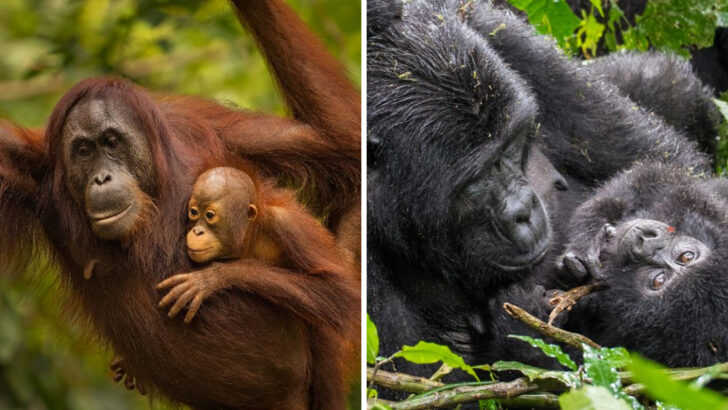Strength doesn’t always wear the crown.
And in the battle of brawn versus brains, the jungle gets complicated.
The gorilla is pure power—a walking wall of muscle that can snap branches (and bones) without breaking a sweat.
But the orangutan? That’s the forest’s clever escape artist. Quiet. Calculating. Suspiciously good at problem-solving.
One charges through the undergrowth like a tank.
The other vanishes into the trees like a ghost with a PhD.
They’re both legends.
Both awe-inspiring.
But only one can take the title of true great ape king.
Let’s break it down—muscle, mind, and everything in between.
Physical Appearance
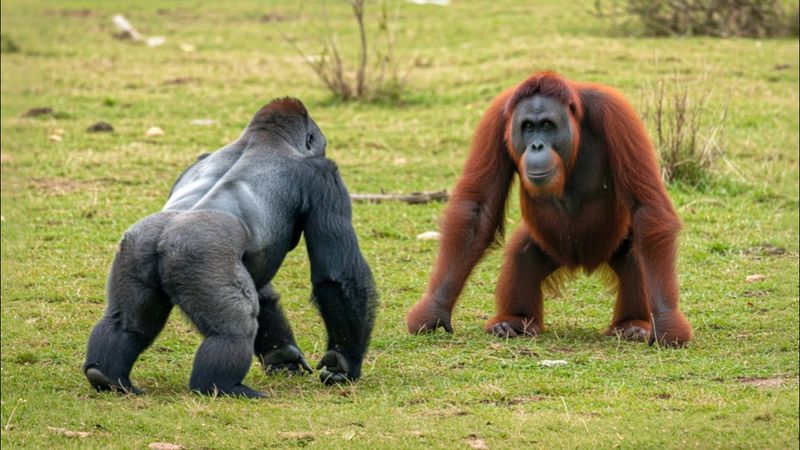
The gorilla’s robust frame exudes power, with broad shoulders and a muscular build that demands respect. In contrast, the orangutan captivates with its unique charm, characterized by elongated arms and a more slender physique. The visual distinction between the two is striking, yet both posses a beauty that is unparalleled in the animal kingdom. Gorillas are often seen as the more imposing of the two, given their size and strength, while orangutans enchant with their agile movements and expressive faces. Their appearances not only reflect their lifestyles but also their evolutionary adaptations.
Habitat Preferences

Gorillas and orangutans occupy different ecological niches, reflecting their diverse habitat preferences. Gorillas thrive in dense forests, where the ground provides ample space for their large groups. Orangutans prefer the rainforest canopies, living a more solitary existence among the trees. This separation in habitat has led to distinct lifestyles, with gorillas being more terrestrial and orangutans exhibiting arboreal prowess. The environment shapes their daily activities, influencing everything from food gathering to social interactions. The contrast in habitats underscores the adaptability and resilience of each species.
Social Structure
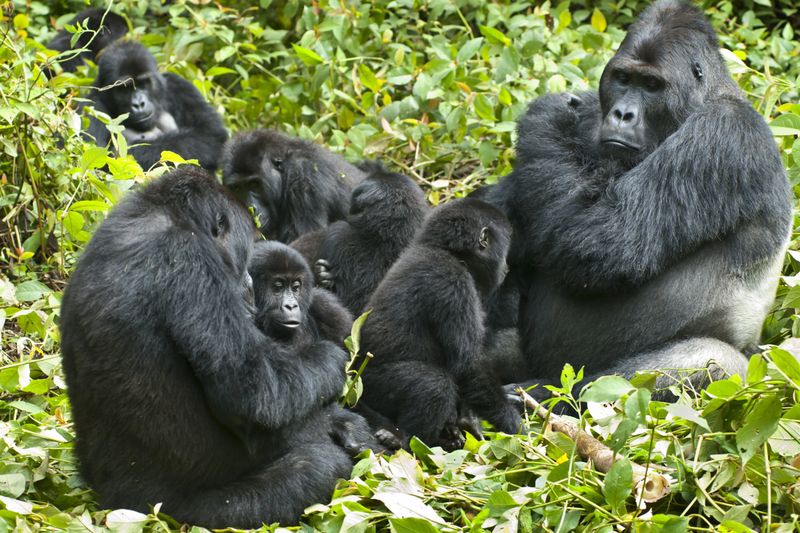
In the social realm, gorillas form tight-knit family groups led by a dominant silverback, whose presence commands attention and respect. These groups foster cooperation and social bonding, with each member playing a vital role. Orangutans, however, prefer a more solitary lifestyle, except for the mother-offspring bond, which is deeply nurturing. While gorillas thrive on group dynamics, orangutans excel in independence. This dichotomy in social structure showcases the diverse survival strategies employed by these great apes, reflecting their unique evolutionary paths and lifestyle adaptations.
Dietary Habits
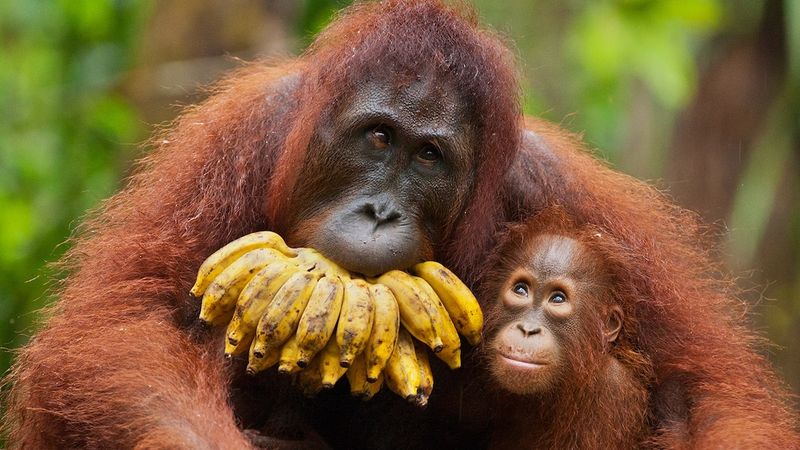
Dietary choices highlight the adaptations of gorillas and orangutans to their environments. Gorillas primarily consume leaves and stems, relying on their strong jaws to process fibrous plant material. Orangutans indulge in a fruit-rich diet, their dexterous hands aiding in the collection of diverse fruits. These dietary habits are not merely about sustenance but reflect each species’ ecological niche. Gorillas’ robust diet supports their energy needs for group activities, while orangutans’ fruit selection aligns with their solitary nature. Food preferences shape their daily routines, embodying their connection to nature.
Communication Styles
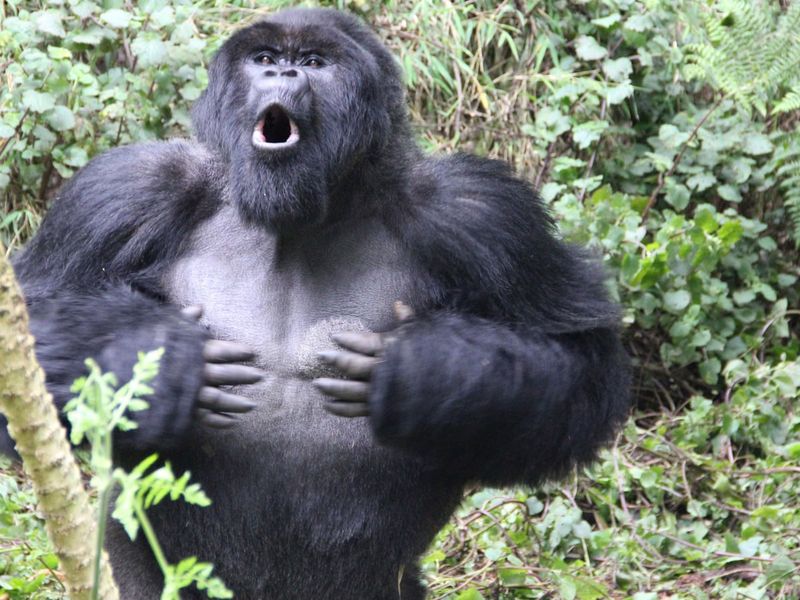
Communication in gorillas and orangutans reveals their intelligence and social instincts. Gorillas often employ vocalizations and physical displays, such as chest beating, to convey dominance or alert others to danger. Orangutans, with their more solitary existence, utilize gestures and facial expressions to communicate their needs and intentions. This divergence in communication reflects their social structures and environmental interactions. While gorillas thrive on group-oriented communication, orangutans excel in personal, nuanced interactions. These communication styles not only connect them with their kind but also showcase their cognitive abilities.
Reproductive Behavior
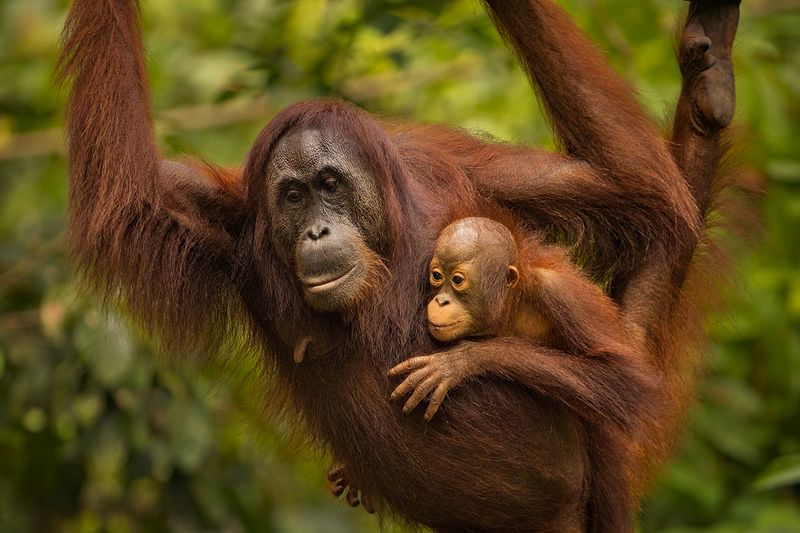
Reproduction in gorillas and orangutans illustrates their differing social structures. Gorillas engage in polygynous relationships, where a dominant silverback mates with several females, ensuring genetic diversity within the group. Orangutans, being solitary, focus on the bond between mother and infant. This maternal connection is profound, with young orangutans staying with their mothers for several years. The contrast in reproductive behavior highlights the evolutionary adaptations that support each species’ survival and reproductive success. These strategies ensure the continuation of their unique genetic legacies.
Lifespan and Growth

The journey from infancy to adulthood in gorillas and orangutans is a testament to their resilience and adaptability. Gorillas reach adulthood by 11 to 13 years, with a lifespan of up to 40 years in the wild. Orangutans mature more slowly, with some reaching adulthood by 15 years, and live up to 45 years. These differing growth patterns reflect their distinct life strategies. Gorillas’ faster growth supports their social dynamics, while orangutans’ extended maturation aligns with their solitary lifestyle. Lifespan and growth stages offer insights into their evolutionary paths.
Tool Use and Intelligence
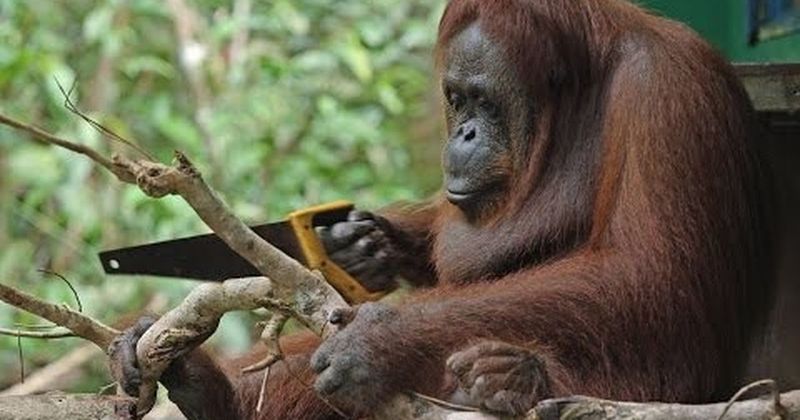
Tool use in gorillas and orangutans demonstrates their intelligence and adaptability. Orangutans are renowned for their ability to use sticks to extract insects or gather food, showcasing problem-solving skills. Gorillas, too, exhibit tool use, often using branches to gauge water depth. These behaviors are not mere survival mechanisms but reflect their cognitive abilities and creative thinking. The ingenuity of these apes challenges our understanding of intelligence in the animal kingdom. Their tool use underscores their capacity for innovation, teaching us about the complexity of their mental lives.
Physical Strength

Physical prowess defines both gorillas and orangutans in unique ways. Gorillas possess immense strength, capable of lifting heavy loads and displaying muscular dominance. Orangutans, with their lightweight build, showcase strength through agility, effortlessly swinging through trees. This distinction in physical strength correlates with their lifestyles. Gorillas’ robust build supports social hierarchy and protection, while orangutans’ agility enables solitary foraging. Their physical strength is not just biological but symbolic of their roles within their ecosystems. It’s a testament to their adaptability and survival instinct.
Conservation Status
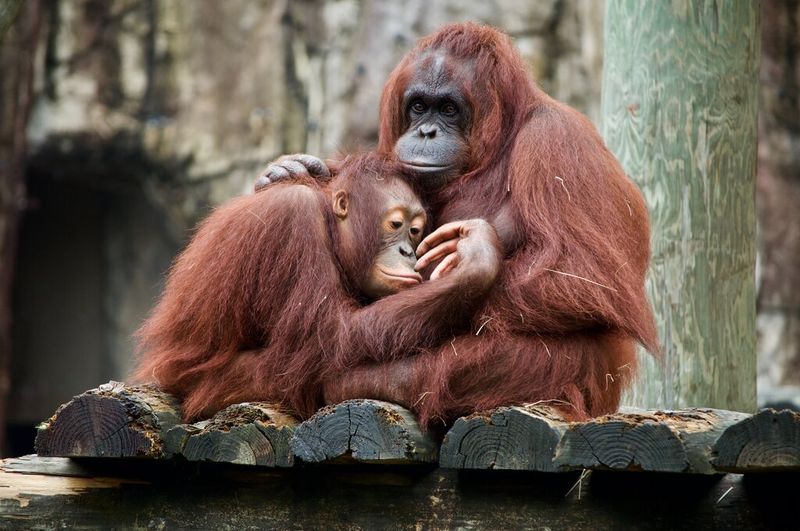
The conservation status of gorillas and orangutans highlights the urgent need for protection. Gorillas, facing habitat destruction and poaching, are critically endangered. Conservation efforts focus on preserving their habitats and engaging local communities. Orangutans, too, are endangered, with deforestation posing a significant threat to their existence. The plight of these great apes underscores the importance of conservation action. Their survival depends on collaborative global efforts, emphasizing the need to safeguard their natural habitats. Protecting these species is crucial for maintaining biodiversity and ecological balance.
Cultural Significance
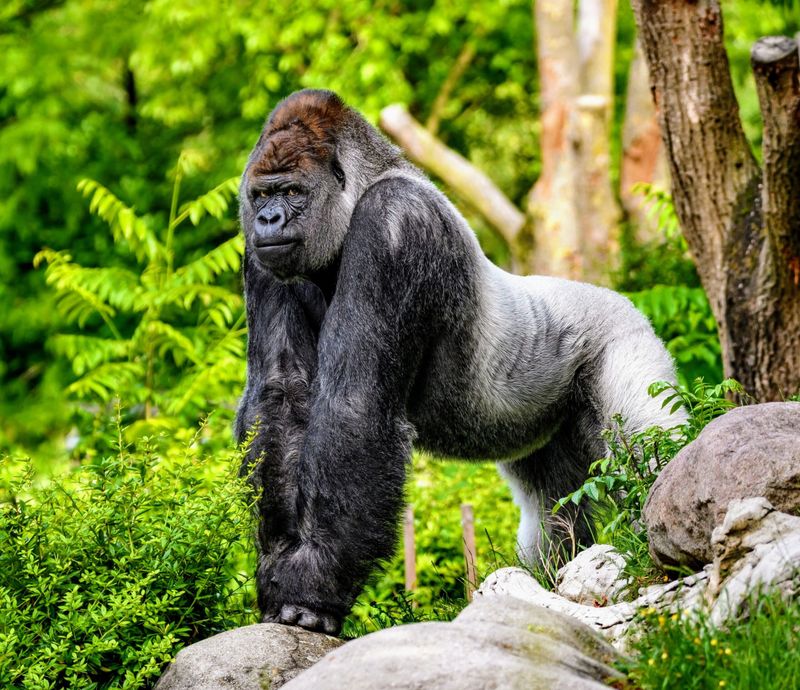
Gorillas and orangutans hold profound cultural significance across various societies. Gorillas, often symbolizing strength and leadership, feature prominently in African folklore and mythology. Orangutans, with their gentle demeanor, are revered in Southeast Asian cultures, symbolizing wisdom and harmony. This cultural importance extends beyond traditional beliefs, influencing modern media and conservation narratives. These great apes inspire awe and respect, shaping our understanding of nature and our responsibility towards it. Their cultural impact highlights the deep connection between humans and these majestic creatures, fostering appreciation and protection.
Behavioral Adaptations
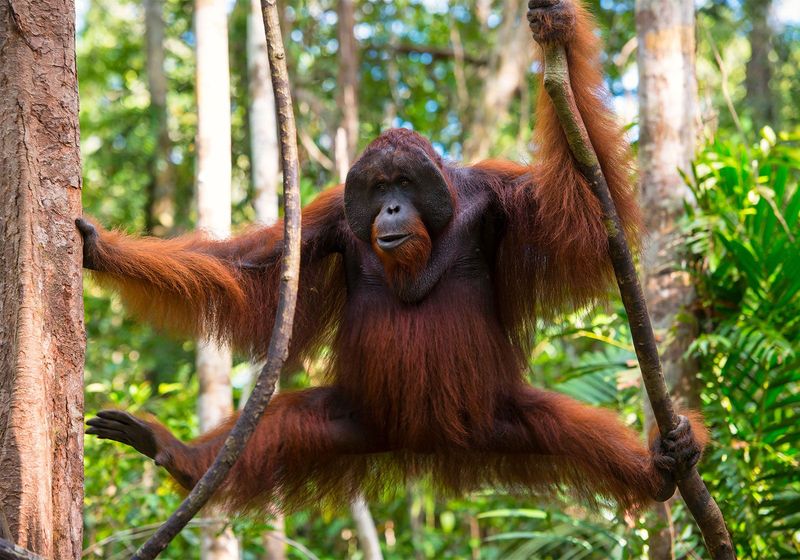
Behavioral adaptations in gorillas and orangutans reveal their resourcefulness and survival skills. Gorillas engage in collective activities, such as group play, fostering social bonds and cooperation. Orangutans display ingenious behaviors, like using leaves as umbrellas, reflecting their adaptability to environmental challenges. These behaviors are more than survival tactics; they represent complex interactions and learning processes. Gorillas’ group dynamics enhance their social structure, while orangutans’ individualistic strategies reflect their solitary nature. Behavioral adaptations illustrate the diverse ways these apes navigate their worlds, showcasing their intelligence and evolutionary success.
Evolutionary History
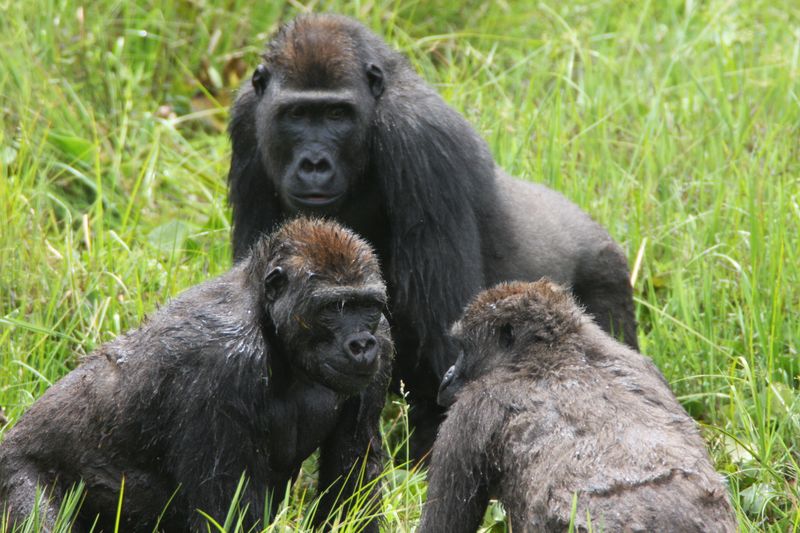
The evolutionary history of gorillas and orangutans is a fascinating journey through time. Gorillas, with their robust ancestors, evolved to adapt to forested environments, developing social structures and physical strength. Orangutans, branching off the evolutionary tree, adapted to arboreal life, emphasizing solitary behavior and dexterity. This divergence highlights the incredible adaptability and resilience of primates. Their evolutionary paths are not only stories of survival but narratives of transformation. Understanding their history offers insights into the shared ancestry of all great apes, including humans, reflecting our interconnectedness with these remarkable creatures.

